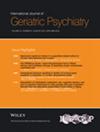Health Profile Transitions and the Association With Cognitive Impairment in Older Nursing Home Residents With Suicidal Ideation
Abstract
Objectives
In older U.S. nursing home residents with suicidal ideation (SI), limited studies have longitudinally investigated their health changes as related to cognitive function. This study aimed to identify the health profiles and the transitions between profiles at admission and 90-days and examine the associations with cognitive impairment.
Methods
Using Minimum Data Set 3.0 (2011–15), we identified 10,079 older residents without severe cognitive impairment who reported SI on Patient Health Questionnaire-9. Health profile indicators included at-admission and 90-day post-admission depressive symptoms, frailty, and pain frequency and intensity. Using latent transition analysis, we identified distinct health profiles, examined the transitions between profiles over time, and estimated their associations with cognitive impairment.
Results
One third of residents continued to report SI at 90 days. The five health profiles identified at admission were distinctive with varying levels of frailty, depressive symptoms, and pain, from the most severe Profile 1 characterized by frailty, all depressive symptoms, and horrible or frequent pain, to the least severe Profile 5 characterized by pre-frailty, depressed mood, and no pain. The 90-day profiles were mostly consistent. Most residents remained in a similar profile over time. Relative to residents with intact cognition/mild cognitive impairment, those with moderate impairment were less likely to belong to profiles characterized by more depressive symptoms and pain.
Conclusions
Residents with SI had heterogeneous health profiles, which varied by cognitive impairment levels, but showed minimal changes despite being in a medically supervised setting. Findings highlighted the critical need for adequate recognition and management of SI in nursing homes.

 求助内容:
求助内容: 应助结果提醒方式:
应助结果提醒方式:


